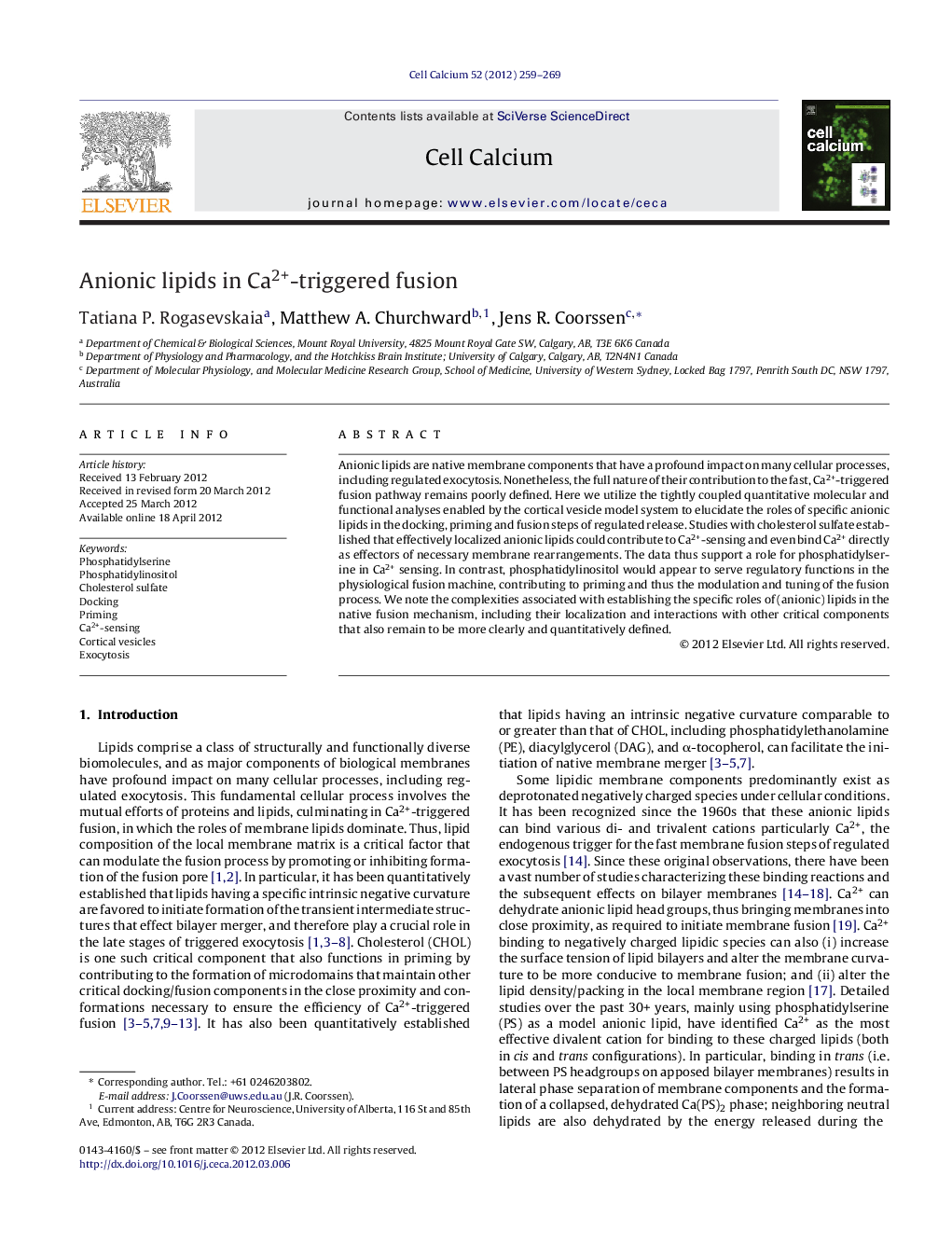| Article ID | Journal | Published Year | Pages | File Type |
|---|---|---|---|---|
| 8463432 | Cell Calcium | 2012 | 11 Pages |
Abstract
Anionic lipids are native membrane components that have a profound impact on many cellular processes, including regulated exocytosis. Nonetheless, the full nature of their contribution to the fast, Ca2+-triggered fusion pathway remains poorly defined. Here we utilize the tightly coupled quantitative molecular and functional analyses enabled by the cortical vesicle model system to elucidate the roles of specific anionic lipids in the docking, priming and fusion steps of regulated release. Studies with cholesterol sulfate established that effectively localized anionic lipids could contribute to Ca2+-sensing and even bind Ca2+ directly as effectors of necessary membrane rearrangements. The data thus support a role for phosphatidylserine in Ca2+ sensing. In contrast, phosphatidylinositol would appear to serve regulatory functions in the physiological fusion machine, contributing to priming and thus the modulation and tuning of the fusion process. We note the complexities associated with establishing the specific roles of (anionic) lipids in the native fusion mechanism, including their localization and interactions with other critical components that also remain to be more clearly and quantitatively defined.
Related Topics
Life Sciences
Biochemistry, Genetics and Molecular Biology
Cell Biology
Authors
Tatiana P. Rogasevskaia, Matthew A. Churchward, Jens R. Coorssen,
